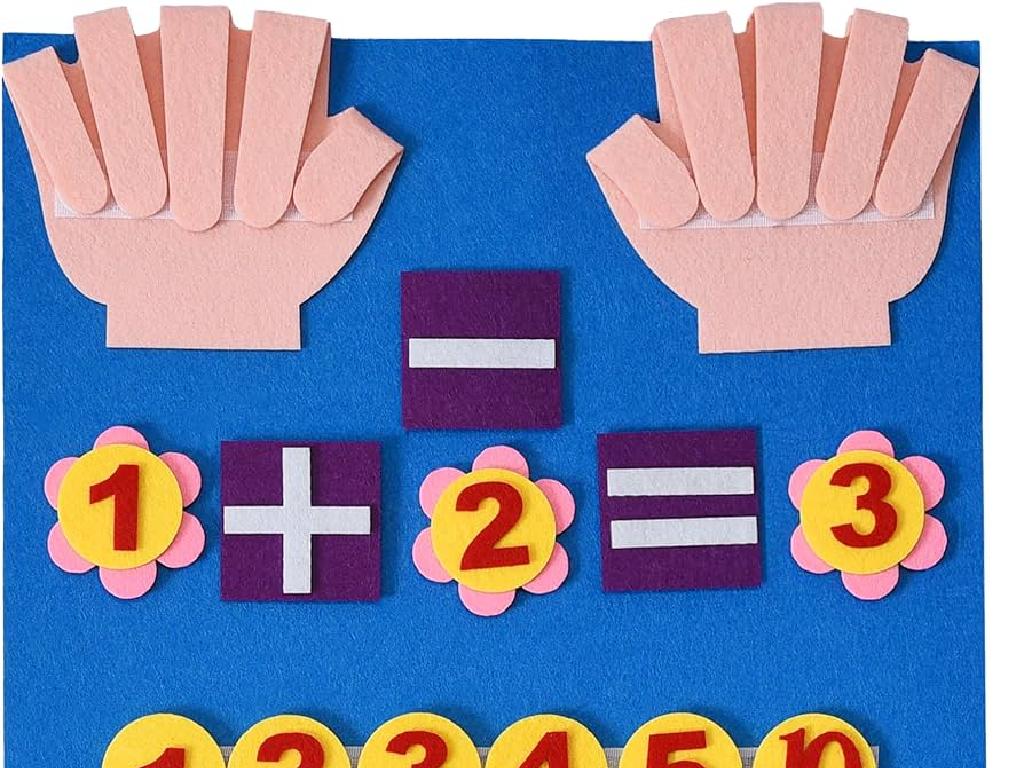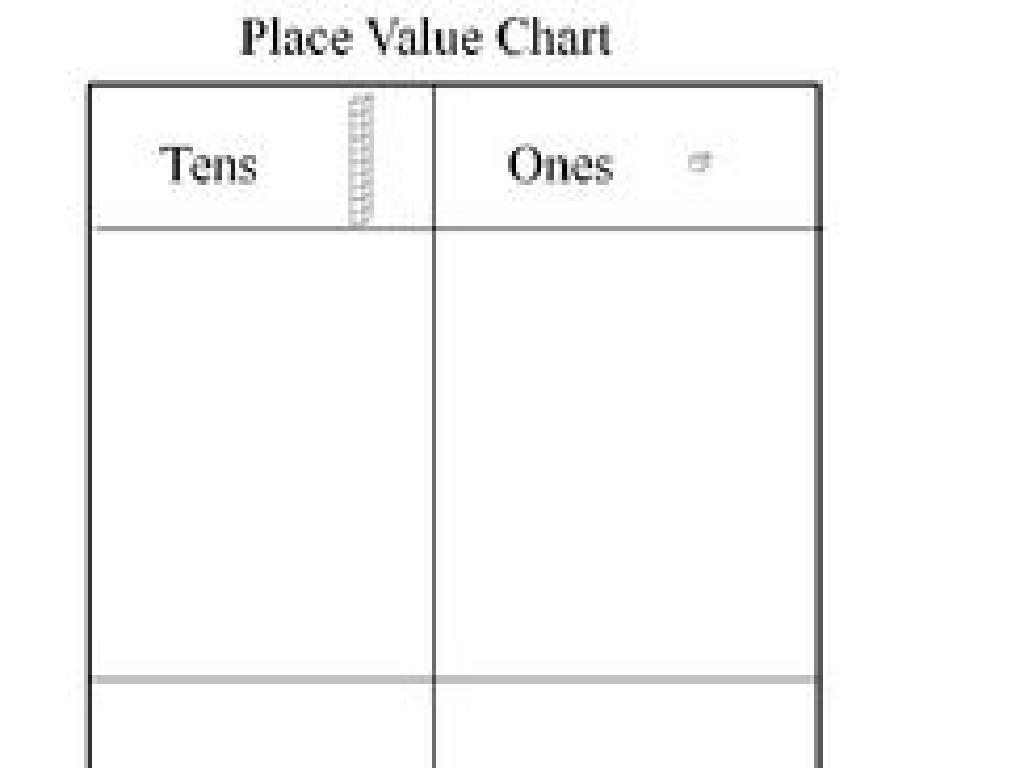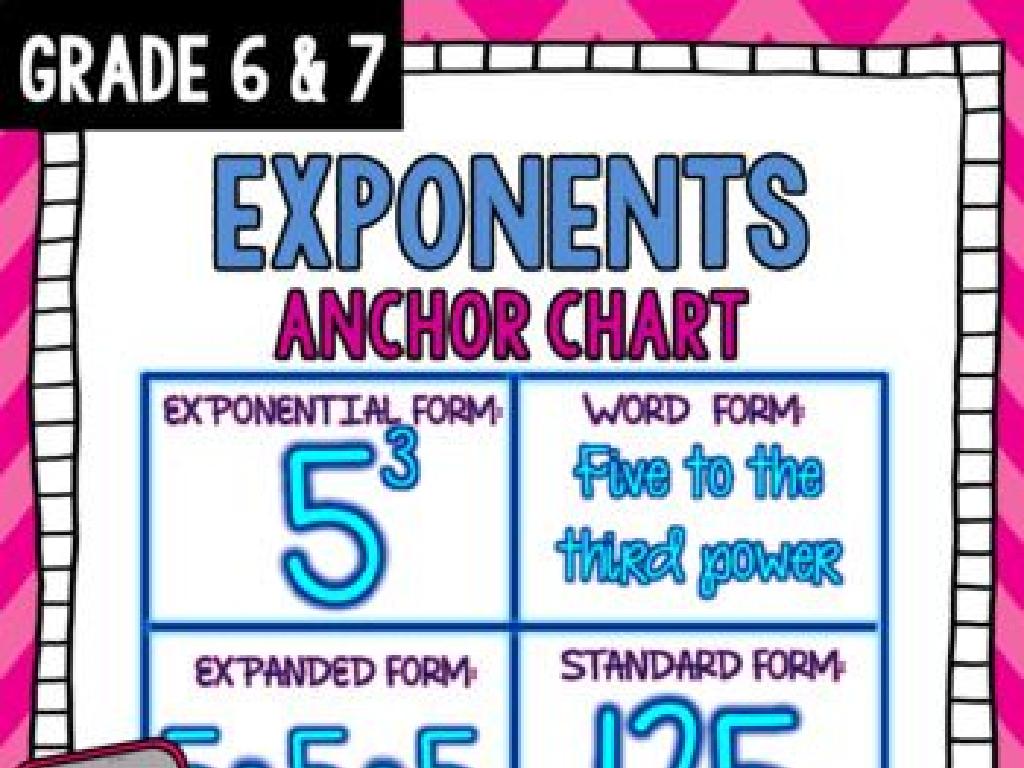Divide Whole Numbers And Unit Fractions
Subject: Math
Grade: Sixth grade
Topic: Divide Fractions
Please LOG IN to download the presentation. Access is available to registered users only.
View More Content
Dividing Whole Numbers and Unit Fractions
– Recap: What are fractions?
– Fractions represent parts of a whole
– Today’s goal: Divide numbers & unit fractions
– Understand how to divide a whole by a fraction
– Why learn this? Real-world uses
– Skills for cooking, budgeting, and more
– Let’s solve problems together!
|
Begin with a brief review of fractions to ensure students recall that fractions represent parts of a whole. Move on to the day’s objective, which is to learn how to divide whole numbers by unit fractions and vice versa. Emphasize the importance of this skill by discussing real-world applications such as dividing a pizza into slices (unit fractions) or determining how many half-cup servings are in a whole cup (whole number divided by a unit fraction). Engage students with practice problems to apply what they’ve learned, ensuring to provide step-by-step guidance and encourage participation.
Understanding Unit Fractions
– Define a unit fraction
– A fraction with a numerator of 1
– Examples of unit fractions
– 1/2, 1/3, 1/4 are unit fractions
– Building fractions from units
– Fractions like 3/4 are made of 3 unit fractions (1/4 + 1/4 + 1/4)
– Unit fractions in division
– Dividing by a unit fraction is like multiplying by its reciprocal
|
Introduce the concept of unit fractions by defining them as fractions with a numerator of 1. Provide clear examples such as 1/2, 1/3, and 1/4 to illustrate. Explain that all other fractions are composed of a certain number of unit fractions, using 3/4 as an example, which is made up of three 1/4 unit fractions. Highlight the importance of understanding unit fractions when dividing whole numbers by fractions, as it involves multiplying by the reciprocal of the unit fraction. Encourage students to practice by creating their own examples and solving division problems involving unit fractions.
Dividing Whole Numbers by Unit Fractions
– Steps to divide by a unit fraction
– Invert the fraction and multiply with the whole number
– Example: Divide 5 by 1/3
– 5 ÷ 1/3 becomes 5 × 3/1, which equals 15
– Visualize the division
– Draw a number line or use objects to show how many 1/3s in 5
|
When teaching students to divide whole numbers by unit fractions, start by explaining the concept of ‘reciprocal’ or ‘multiplicative inverse’. Show them how to flip the fraction and change the division into multiplication. Use the example of dividing 5 by 1/3 to illustrate this process. Provide a visual representation, such as a number line or objects, to help students understand that dividing by a unit fraction is finding out how many of those fractions fit into the whole number. This visual aid reinforces the concept that division by a fraction is the same as multiplying by its reciprocal. Encourage students to practice with different whole numbers and unit fractions to build their confidence.
Dividing Unit Fractions by Whole Numbers
– Steps to divide a unit fraction by a whole number
– Invert the whole number and multiply with the fraction
– Example: Divide 1/4 by 3
– 1/4 ÷ 3 equals 1/4 x 1/3 which simplifies to 1/12
– Use models for visual understanding
– Draw a pie chart to show 1/4 split into 3 equal parts
– Practice with different fractions
|
This slide introduces the concept of dividing unit fractions by whole numbers. Start by explaining the steps: invert the whole number to make it a reciprocal, then multiply it by the unit fraction. Use the example of dividing 1/4 by 3 to show this process step by step. Visual aids like pie charts or bar models can help students grasp the concept of how a whole is divided into smaller, equal parts. Encourage students to practice with different fractions and whole numbers to build proficiency. Provide additional examples and have students use models to solve them, reinforcing the concept through visual learning.
Dividing Whole Numbers and Unit Fractions
– Let’s solve 7 ÷ 1/2 together
– How many halves are in 7? Multiply 7 by 2.
– Now, let’s divide 1/5 by 4
– Split 1/5 into 4 equal parts. Multiply 1/5 by 1/4.
|
This slide is designed for a practice activity where students will apply their knowledge of dividing whole numbers by unit fractions and vice versa. For the first problem, guide the students to understand that dividing by a fraction is the same as multiplying by its reciprocal. Therefore, 7 divided by 1/2 is the same as 7 multiplied by 2. For the second problem, explain that dividing a fraction by a whole number involves multiplying by the reciprocal of the whole number, which is a unit fraction. So, 1/5 divided by 4 is the same as 1/5 multiplied by 1/4. Encourage students to visualize these problems with drawings or models if necessary. After solving these problems, provide additional practice problems for students to work on individually or in small groups.
Strategies for Dividing Fractions
– Invert and multiply to divide
– Flip the divisor and multiply it by the dividend
– Visualize with a drawing
– Sketch the fractions to see the division
– Use multiplication to check work
– After dividing, multiply to ensure the answer is correct
|
When teaching students to divide whole numbers by unit fractions, it’s crucial to emphasize the strategy of inverting the divisor (the fraction) and then multiplying it by the dividend (the whole number). This method simplifies the process and avoids the confusion of traditional division. Encouraging students to draw a picture can help them better understand how the fractions are divided, especially for visual learners. Lastly, checking the work by multiplying the quotient by the divisor should result in the original dividend, which confirms the accuracy of their division. Provide several examples and practice problems to reinforce these strategies.
Class Activity: Fraction Division Relay
– Split class into teams
– Solve division problems together
– Each member does one step
– One student finds the reciprocal, another multiplies, etc.
– First team to finish wins!
|
This activity is designed to encourage teamwork and understanding of the division of whole numbers by unit fractions. Divide the class into small groups, ensuring each team has an equal number of members. Provide each team with a set of division problems involving whole numbers and unit fractions. Each student in the team is responsible for completing one step of the division process. For example, one student may find the reciprocal of the unit fraction, another multiplies the whole number by this reciprocal, and so on. The first team to complete all problems correctly wins a small prize. This relay race format makes learning interactive and fun, reinforcing the concept of dividing by fractions through collaboration. Prepare 4-5 different sets of problems in case there are varying levels of ability within the class.
Wrapping Up: Division of Whole Numbers & Unit Fractions
– Recap of today’s lesson
We revisited dividing whole numbers by unit fractions and vice versa.
– Practice makes perfect
The more you practice, the better you’ll understand and master the concept.
– Homework: Division worksheet
Complete the provided worksheet to practice dividing whole numbers and unit fractions.
– Keep practicing at home!
|
As we conclude today’s lesson, it’s important to review the key concepts we’ve covered about dividing whole numbers and unit fractions. Emphasize to students that mastering math skills takes practice, and the homework will help reinforce what they’ve learned. The worksheet for homework consists of problems that require students to apply the methods taught in class. Encourage them to attempt the worksheet independently but remind them to reach out if they encounter difficulties. In the next class, we’ll review the homework answers and clarify any misunderstandings. This continuous practice is crucial for their success in math.






